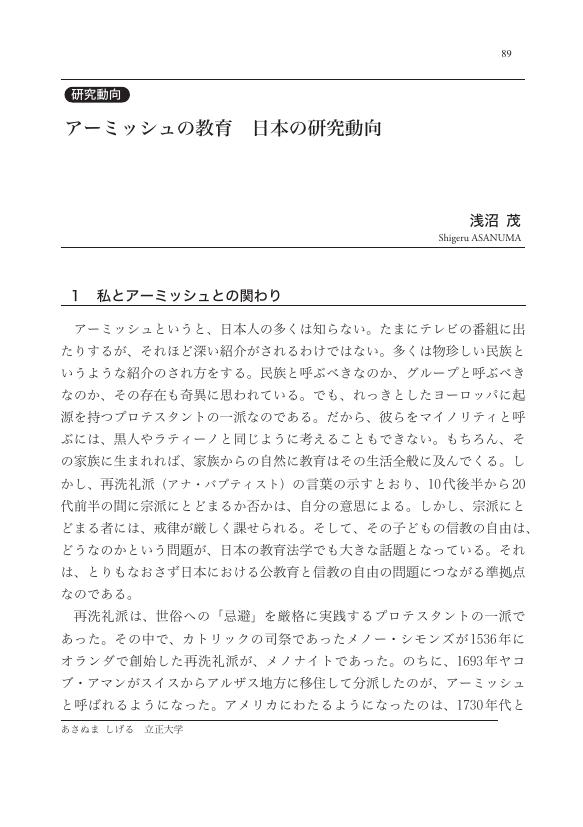3 0 0 0 OA アメリカ合衆国の高等教育と連邦政府 —間接的関与の在り方
- 著者
- 野崎 与志子
- 出版者
- アメリカ教育学会
- 雑誌
- アメリカ教育研究 (ISSN:24339873)
- 巻号頁・発行日
- vol.30, pp.112-126, 2020-02-10 (Released:2022-03-30)
1 0 0 0 OA アーミッシュの教育日本の研究動向
- 著者
- 浅沼 茂
- 出版者
- アメリカ教育学会
- 雑誌
- アメリカ教育研究 (ISSN:24339873)
- 巻号頁・発行日
- vol.31, pp.89-109, 2021-02-28 (Released:2022-03-29)
- 著者
- 阿曽沼 明裕
- 出版者
- アメリカ教育学会
- 雑誌
- アメリカ教育研究 (ISSN:24339873)
- 巻号頁・発行日
- vol.30, pp.65-82, 2020-02-10 (Released:2022-03-30)
- 参考文献数
- 12
It is often said that Japanese higher education institutions should be more functionally- differentiated within the entire higher education system in order to make effective use of the limited resources in the context of the shrinking higher education population and tight government fiscal policy. The issues of the functional differentiation of higher education institutions are highly related to how the government allocates financial resources to higher education institutions. Japanese scholars and government administrators often look at and refer to the diversity of the American higher education system, especially the famous “Carnegie Classification of Institutions of Higher Education”. They have also focused on the US federal research grants system and financial aids to students. However, we have not yet got the total image of the flows of government funds to US higher education institutions. This article examines the scale and structure of flows of the government funds by using the IPEDS (The Integrated Postsecondary Education Data System) in order to understand the conditions and backgrounds of the effective functional differentiated higher education system.In the US system, there are mainly three factors which make the understanding of the flows of government funds difficult. Firstly, there are several governments responsible for funding higher education institutions: federal government, state governments, and local governments. Secondly, there are several ways of funding: appropriations, grants and contracts, and student aids. Thirdly, there are various types of higher education institutions; public, private for-profit, and private not-for-profit in addition to the functionally differentiated institutions such as research universities, doctoral universities, master’s colleges & universities, baccalaureate colleges, associate’s colleges, special focus institutions and so on. We examine the flows of governmental funds based on the analysis of relationship between these three factors.
1 0 0 0 OA アメリカ・ナショナリズムの展開と「よい市民」の形成
- 著者
- 宮本 健市郎
- 出版者
- アメリカ教育学会
- 雑誌
- アメリカ教育研究 (ISSN:24339873)
- 巻号頁・発行日
- vol.30, pp.1-11, 2020-02-10 (Released:2022-03-30)

